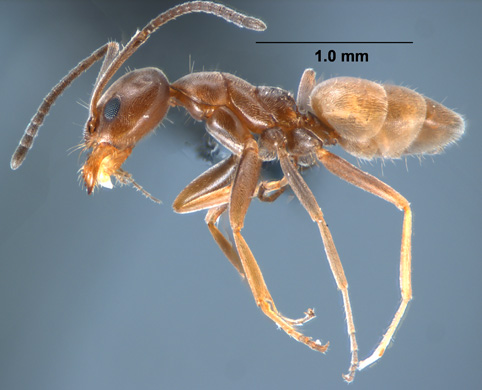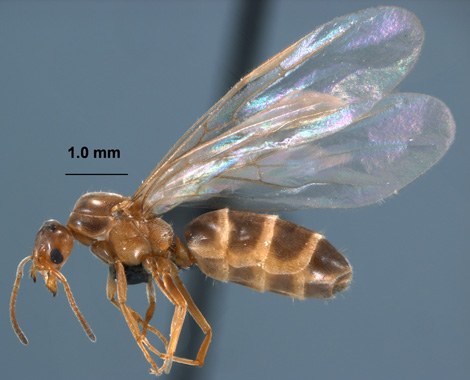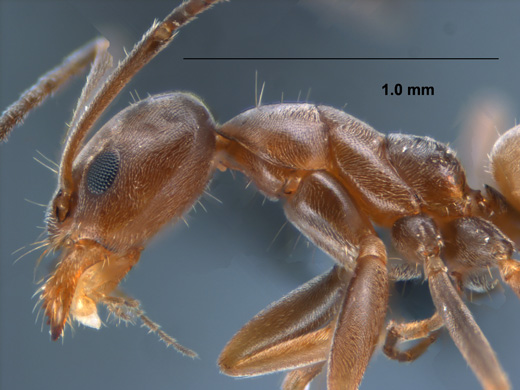Subfamily DOLICHODERINAE |
|
Forelius mccooki, profile view of worker (click image to enlarge). |
Forelius mccooki, profile view of worker. (click image to enlarge). |
Forelius mccooki, profile view of alate queen (click image to enlarge). |
Forelius mccooki, profile view of male (click image to enlarge). |
Forelius mccooki, full face view of worker (click image to enlarge). |
Forelius mccooki, profile view of worker showing head, alitrunk and petiole. (click image to enlarge). |
Introduction At this time the Forelius situation in the southeastern United States is somewhat confusing, and I am not sure anybody really knows what is going on. Most references mention both F. analis and F. mccooki as being western species; however F. analis has been recorded from the Southeast as well (historic records). At one time in the not so distant past, F. analis was considered a subspecies of F. pruinosus (Bolton 1995). Later, Ward (2005) sunk F. analis into F. pruinosus. This synonymy does not really resolve the problem, because we clearly have two common, distinct species and an undescribed new species in the Southeast. The dark ones we find in sandy habitats are clearly F. pruinosus. The other common species in the region was formerly called F. analis and is easily distinguished from F. pruinosus. With the name F. analis not accepted as a valid species name, that created the question of what our other species should be called. It is very similar to F. mccooki, but differs by having less abundant erect setae on the body and scapes. It is entirely likely that this species is not F. mccooki, but is instead either an undescribed species, or is simply F. analis, in which case that name should be resurrected. However, until that name is resurrected, or the group is revised, I am using the only current name available that makes any sense, which is F. mccooki. Basically, at this time it looks like there are three species known to occur in the Southeast: F. mccooki, F. pruinosus, and F. new sp. Forelius pruinosus, strictly a sand inhabiting ant, is apparently a good species, and is dark-gray to black colored with very few erect hairs on the body and none on the scapes and legs. This species appears to be found only in areas of deep sand. The new species, also a sand inhabiting species, is a lighter gray color and differs from the other species in that it is extremely hairy in appearance with erect hairs covering much of the body including the legs and scapes. Forelius mccooki seem to fall somewhere between those two species and has fewer erect hairs on the body than the new species (but more than F. pruinosus) and few to no erect hairs on the scapes. Identification Biology and Economic Importance Distribution Literature Cited Smith, M. R. 1965. House-infesting ants of the Eastern United States, their recognition, biology, and economic importance. United States Department of Agriculture, Technical Bulletin No. 1326: i-105. Ward, P. S. 2005. A synoptic review of the ants of California (Hymenoptera: Formicidae). Zootaxa 936: 1-68. Links |
|








